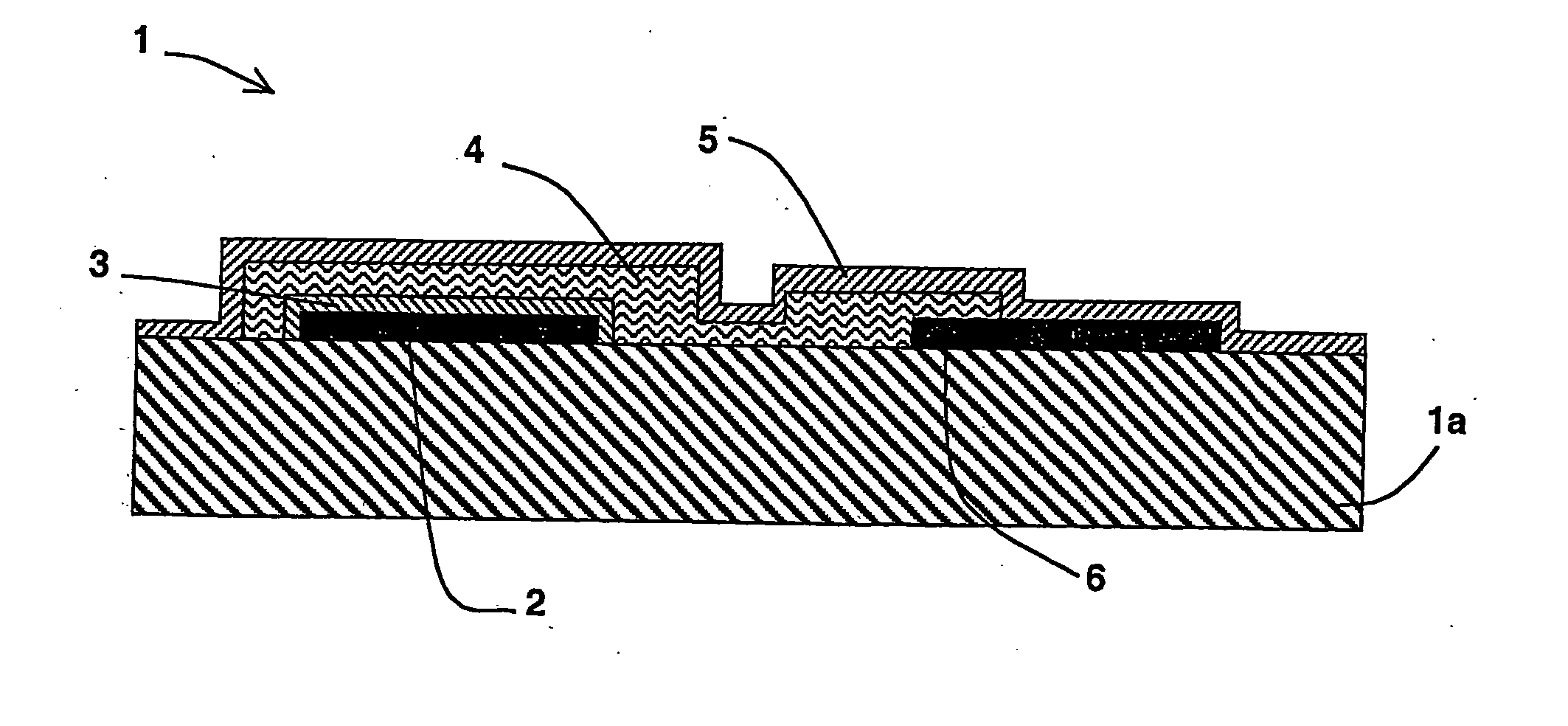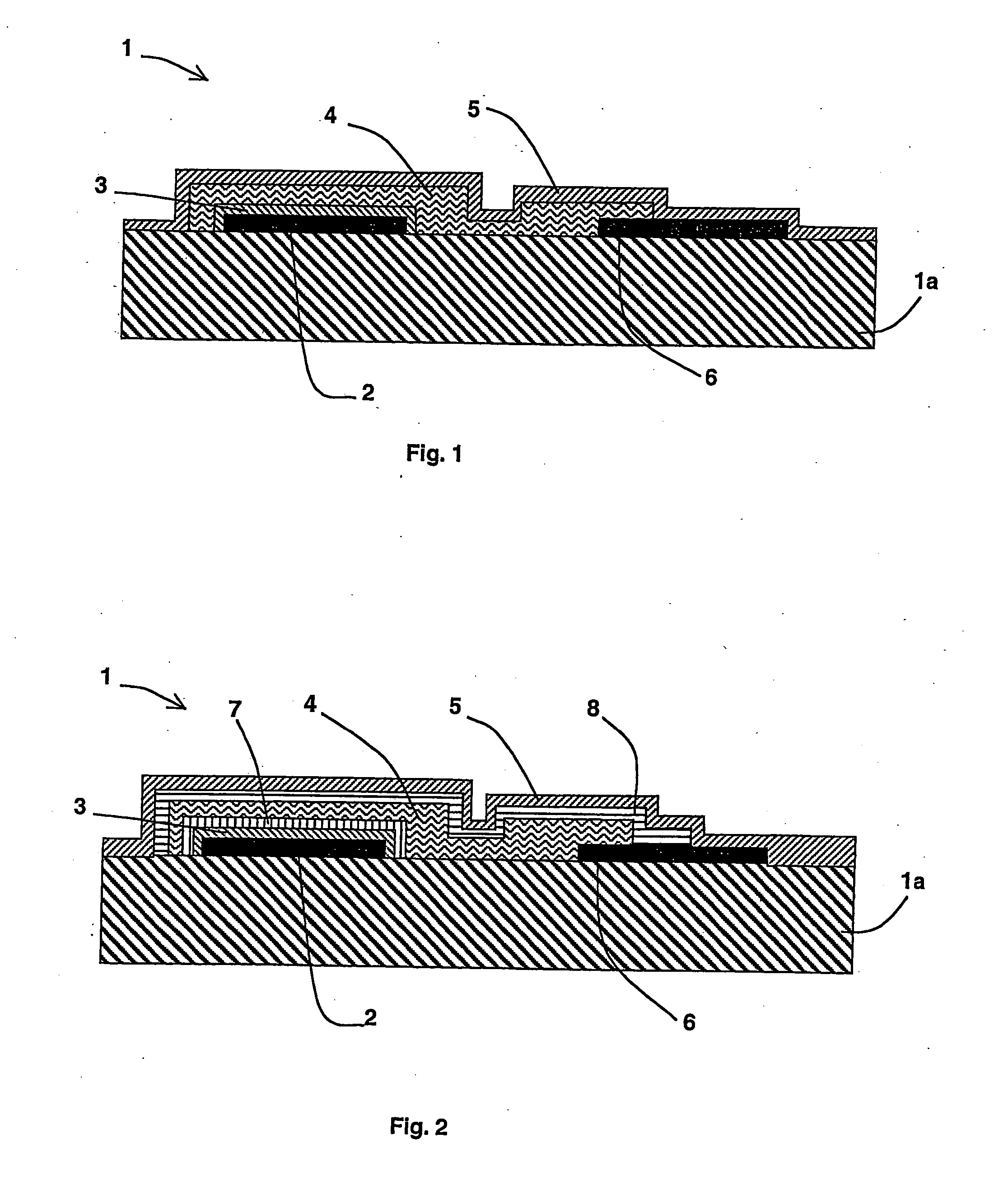Microbattery with at least one electrode and electrolyte each comprising a common grouping (xy1y2y3y4) and method for production of said microbattery
a micro-battery and electrolyte technology, applied in the field of micro-battery, can solve the problems of insufficient reduction of the internal electrical resistance of the battery, and achieve the effect of moderate electrical resistance and high energy storage capacity
- Summary
- Abstract
- Description
- Claims
- Application Information
AI Technical Summary
Benefits of technology
Problems solved by technology
Method used
Image
Examples
Embodiment Construction
[0023] As illustrated in FIG. 1, a microbattery 1 comprises a substrate 1a on which first and second metal current collectors 2 and 6 are arranged. The current collectors are for example made of platinum, chromium, gold or titanium and they preferably have a thickness comprised between 0.1 μm and 0.3 μm.
[0024] The first current collector 2 is totally covered by an electrode forming the cathode 3 so that the latter surrounds the first current collector 2 and a thin layer forming the electrolyte 4 is deposited so as to cover the cathode 3, the part of the substrate 1a separating the first and second current collectors 2 and 6 and a part of the second collector 6. Another electrode forming the anode 5 is arranged so as to be in contact with the substrate 1a, the electrolyte 4 and the free part of the second current collector 6. The anode and cathode each preferably have a thickness comprised between 0.1 μm and 15 μm.
[0025] At least one of the two electrodes and the electrolyte 4 each...
PUM
| Property | Measurement | Unit |
|---|---|---|
| thickness | aaaaa | aaaaa |
| thickness | aaaaa | aaaaa |
| thickness | aaaaa | aaaaa |
Abstract
Description
Claims
Application Information
 Login to View More
Login to View More - R&D
- Intellectual Property
- Life Sciences
- Materials
- Tech Scout
- Unparalleled Data Quality
- Higher Quality Content
- 60% Fewer Hallucinations
Browse by: Latest US Patents, China's latest patents, Technical Efficacy Thesaurus, Application Domain, Technology Topic, Popular Technical Reports.
© 2025 PatSnap. All rights reserved.Legal|Privacy policy|Modern Slavery Act Transparency Statement|Sitemap|About US| Contact US: help@patsnap.com


